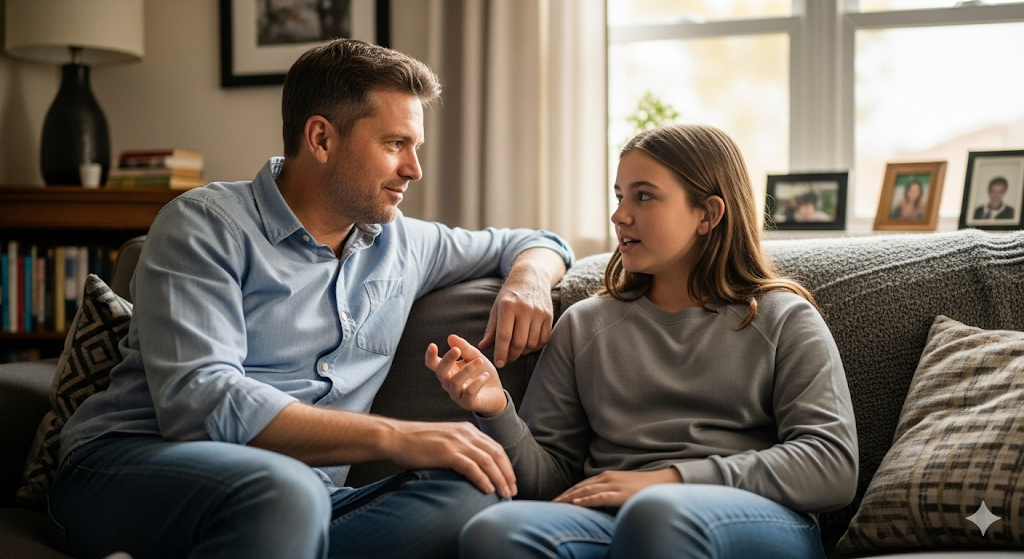Parenting brings moments of joy, pride, and deep connection – but also moments that test your patience in ways you never expected. Whether it’s the morning chaos of getting everyone out the door, homework battles, or repeated reminders to clean up toys, frustration can rise fast. You love your kids, but in those tense moments, it’s easy to lose calm and say things you regret later.
The truth is, frustration with your children isn’t a sign that you’re a bad parent – it’s a sign that you’re human. And learning to handle that frustration skillfully is one of the most loving gifts you can give both yourself and your kids.
That’s where the LOWER method – Label, Own, Wait, Explore, Resolve – comes in. It’s a simple, five-step formula for handling frustration before it turns into anger or guilt.
Step 1: Label – Recognize What’s Happening
The first step is to pause and acknowledge the emotion instead of reacting automatically.
Say to yourself:
“That’s frustrating when my child ignores me for the fifth time.”
“That’s frustrating when bedtime turns into a nightly argument.”
Labeling the feeling creates space between you and the emotion. You’re not denying your frustration – you’re naming it. That small act of awareness turns an impulsive reaction into a moment of control.
Pro tip: Labeling emotions out loud (calmly and appropriately) also teaches your children emotional vocabulary. When they see you say “that’s frustrating,” they learn it’s okay to have feelings – it’s how you handle them that matters.
Step 2: Own – Take Responsibility for Your Feeling
Once you’ve labeled the emotion, own it. This shifts the focus from your child’s behavior to your own reaction.
Try saying:
“I feel frustrated when I have to repeat myself so many times.”
This is powerful because it moves the focus from blame to ownership. You’re no longer just reacting to your child – you’re reflecting on your internal state.
Owning your feeling doesn’t excuse your child’s behavior; it simply helps you regulate your own emotions so you can guide theirs more effectively.
Step 3: Wait – Give Yourself Breathing Space
Waiting doesn’t mean ignoring the problem. It means giving your nervous system a chance to reset. Even 10 seconds can prevent a harsh reaction.
In those moments, try one of these:
- Take three deep breaths and unclench your jaw.
- Step out of the room for a minute.
- Say calmly, “I need a second before we talk about this.”
- Imagine pressing a mental “pause button.”
Waiting breaks the pattern of frustration leading straight to anger. It also models patience for your kids – they see what it looks like to pause instead of explode.
Step 4: Explore – Look Beneath the Surface
This is where you become curious, not critical. Ask yourself what’s really happening.
Here are four ways to explore the situation:
- Check your expectations. Are they realistic for your child’s age or mood? Sometimes we expect adult-level focus from kids who just need a break.
- Notice your triggers. Are you reacting more strongly because you’re tired, stressed from work, or rushed?
- Empathize with your child. What might they be feeling right now – confused, tired, seeking attention, or overwhelmed?
- Find patterns. If the same frustration keeps coming up (like homework battles), it’s a sign to change the routine or your approach.
Exploring shifts your energy from irritation to problem-solving. It replaces the question “Why won’t they just listen?” with “What’s really going on here?”
Step 5: Resolve – Choose a Healthier Response
Once you’ve labeled, owned, waited, and explored, you’re ready to resolve the situation with clarity instead of anger.
Resolution often looks like:
- Setting a consistent boundary: “I’ll help with homework after you put your toys away.”
- Offering empathy: “I know you’re tired. Let’s take a five-minute break, then we’ll finish together.”
- Using calm follow-through: “If the toys aren’t picked up, they go away for a while.”
Each time you move through LOWER, you reinforce your own patience muscles. Over time, frustration becomes less frequent, and your children learn emotional regulation by watching you model it.
Why LOWER Works for Parenting
Parenting frustration often stems from the gap between expectation and reality – wanting cooperation, calm, or order when life feels chaotic. LOWER bridges that gap by slowing down your emotional process.
It doesn’t make your kids behave perfectly, but it helps you show up as the calm parent you want to be. The more often you practice it, the faster it becomes second nature – even in those “I’m about to lose it” moments.
FAQs
Q: What if I lose my patience anyway?
That’s normal. The goal isn’t perfection – it’s recovery. When you slip, use LOWER after the fact to process what happened and talk it through with your kids.
Q: Can LOWER work with teenagers?
Absolutely. Teens often push boundaries, but LOWER helps you respond calmly and communicate respect – two things that make them more likely to listen.
Q: How long does it take to see a difference?
Most parents notice small improvements within a week of consistent practice. Patience builds like any other skill – with repetition and reflection.
Q: Is LOWER just for parenting?
No. LOWER can help you handle frustration in marriage, work, or finances too. It’s a universal emotional skill set.
Related Articles on That’s Frustrating
- Angry Outburst at Your Family? 5 Steps to Take Right Away
- How to Talk to Your Kids About Money Without Stress
External Resources
- Child Mind Institute – How to Keep Calm When Kids Push Your Buttons
- Verywell Family – 10 Ways to Be a More Patient Parent
- Positive Parenting Solutions – Understanding Your Triggers
Closing Thoughts
Parenting frustration is inevitable – but losing your patience doesn’t have to be. The LOWER method gives you a structure for handling emotion in real time, replacing guilt with growth.
When you label, own, wait, explore, and resolve, you’re not just managing frustration – you’re modeling emotional intelligence. And that might be the most powerful lesson your kids ever learn from you.





Leave a Reply